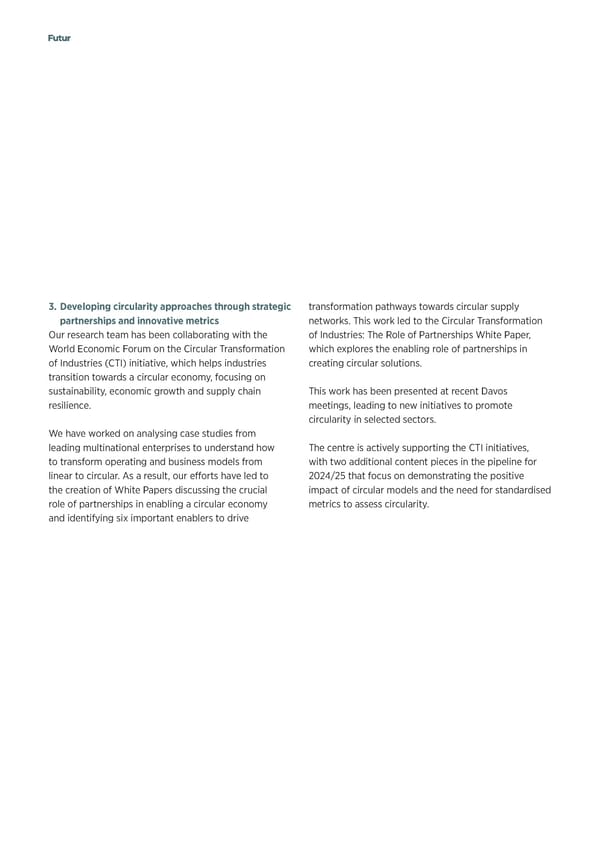SUSTAINABILITY SPOTLIGHT | 49 Figure 2: Supply Chain Evaluation Source: Srai, J.S. et al Framework for Renewable Feedstocks 2018, ‘Circular supply chains and renewable chemical feedstocks: a network con昀椀guration analysis framework’, Production Planning & Control, 29(6): 464–482. DOI: 10.1080/09537287.20 18.1449263. 3. Developing circularity approaches through strategic transformation pathways towards circular supply partnerships and innovative metrics networks. This work led to the Circular Transformation Our research team has been collaborating with the of Industries: The Role of Partnerships White Paper, World Economic Forum on the Circular Transformation which explores the enabling role of partnerships in of Industries (CTI) initiative, which helps industries creating circular solutions. transition towards a circular economy, focusing on sustainability, economic growth and supply chain This work has been presented at recent Davos resilience. meetings, leading to new initiatives to promote circularity in selected sectors. We have worked on analysing case studies from leading multinational enterprises to understand how The centre is actively supporting the CTI initiatives, to transform operating and business models from with two additional content pieces in the pipeline for linear to circular. As a result, our e昀昀orts have led to 2024/25 that focus on demonstrating the positive the creation of White Papers discussing the crucial impact of circular models and the need for standardised role of partnerships in enabling a circular economy metrics to assess circularity. and identifying six important enablers to drive Figure 3: Circular Transformation Operating and Business Models Source: World Economic Forum 2024, ‘Circular Transformation of Industries: The role of partnerships’. https://www3.weforum.org/docs/WEF_Circular_Transformation_of_Industries_2023.pdf
 Sustainability Spotlight Magazine Page 48 Page 50
Sustainability Spotlight Magazine Page 48 Page 50